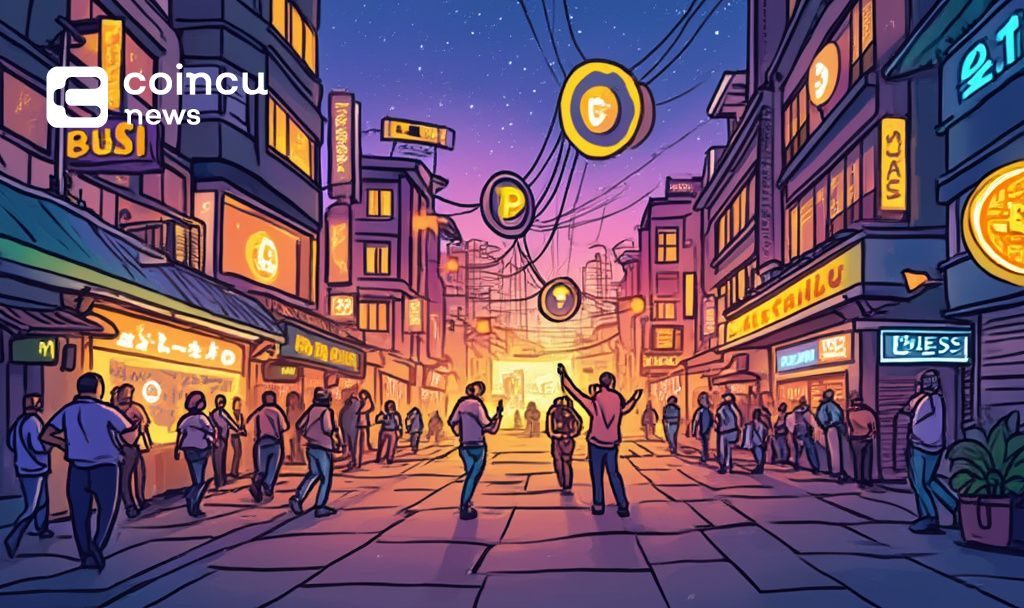Is Pepenode Set to Rival $PEPE With Its Mine-to-Earn Utility
The post Is Pepenode Set to Rival $PEPE With Its Mine-to-Earn Utility appeared on BitcoinEthereumNews.com. The rise of meme coins has produced viral giants like Dogecoin, Shiba Inu, and Pepe, projects fueled largely by community hype and internet culture. As investors search for the “next Pepe,” many are wondering if a new contender can capture similar momentum. Pepenode aims to answer that question. By combining meme culture with a Mine-to-Earn model, high staking rewards, and gamified mining mechanics, it is carving out a niche that could spark a surge reminiscent of Pepe’s breakout. With its presale already drawing attention, all eyes are on whether Pepenode can live up to the hype. Reinventing Meme Coins Through Mine-to-Earn While many presales today rely purely on hype with little real utility, Pepenode stands out by turning mining into an interactive experience. Source – Cryptonews YouTube Channel Instead of following the typical “buy and hold” model, users can create virtual mining rigs, purchase meme nodes, and build digital server rooms from their phone or computer without expensive hardware or high electricity costs. How Pepenode Works Virtual Mining Rigs – Users build and customize their own rigs online. Node Purchase & Upgrades – Nodes act as digital “miners” that generate tokens. Players can upgrade nodes to increase efficiency and rewards. Server Rooms – Nodes are placed in digital server rooms that users manage, creating a mini ecosystem of mining activity. Gamified Rewards – Users earn Pepenode Tokens as they play, merging the worlds of gaming and crypto earning. Pepenode’s pixelated retro graphics and 90s-style game design create a nostalgic experience that appeals to Gen Z and millennial audiences. By gamifying token mining, Pepenode adds utility that most meme coins lack, making the process both entertaining and rewarding. How Pepenode Rewards Players and Builds a Gamified Mining Ecosystem Pepenode incorporates innovative tokenomics to create value and scarcity. Approximately 70% of tokens used…

The post Is Pepenode Set to Rival $PEPE With Its Mine-to-Earn Utility appeared on BitcoinEthereumNews.com.
The rise of meme coins has produced viral giants like Dogecoin, Shiba Inu, and Pepe, projects fueled largely by community hype and internet culture. As investors search for the “next Pepe,” many are wondering if a new contender can capture similar momentum. Pepenode aims to answer that question. By combining meme culture with a Mine-to-Earn model, high staking rewards, and gamified mining mechanics, it is carving out a niche that could spark a surge reminiscent of Pepe’s breakout. With its presale already drawing attention, all eyes are on whether Pepenode can live up to the hype. Reinventing Meme Coins Through Mine-to-Earn While many presales today rely purely on hype with little real utility, Pepenode stands out by turning mining into an interactive experience. Source – Cryptonews YouTube Channel Instead of following the typical “buy and hold” model, users can create virtual mining rigs, purchase meme nodes, and build digital server rooms from their phone or computer without expensive hardware or high electricity costs. How Pepenode Works Virtual Mining Rigs – Users build and customize their own rigs online. Node Purchase & Upgrades – Nodes act as digital “miners” that generate tokens. Players can upgrade nodes to increase efficiency and rewards. Server Rooms – Nodes are placed in digital server rooms that users manage, creating a mini ecosystem of mining activity. Gamified Rewards – Users earn Pepenode Tokens as they play, merging the worlds of gaming and crypto earning. Pepenode’s pixelated retro graphics and 90s-style game design create a nostalgic experience that appeals to Gen Z and millennial audiences. By gamifying token mining, Pepenode adds utility that most meme coins lack, making the process both entertaining and rewarding. How Pepenode Rewards Players and Builds a Gamified Mining Ecosystem Pepenode incorporates innovative tokenomics to create value and scarcity. Approximately 70% of tokens used…
What's Your Reaction?








































